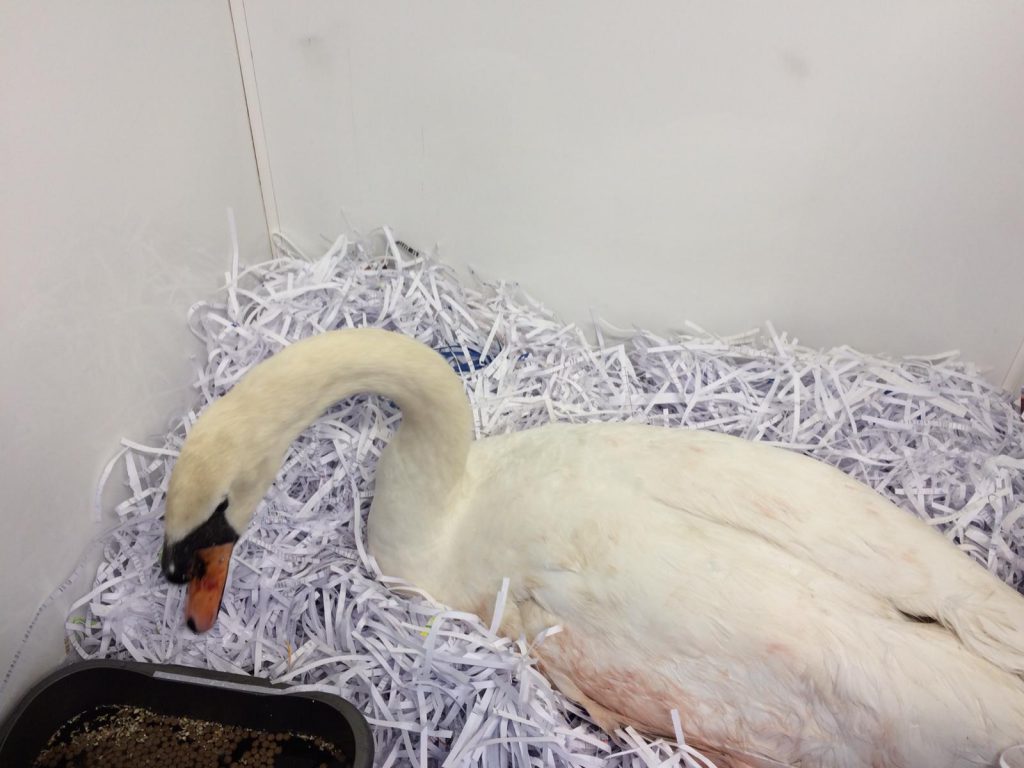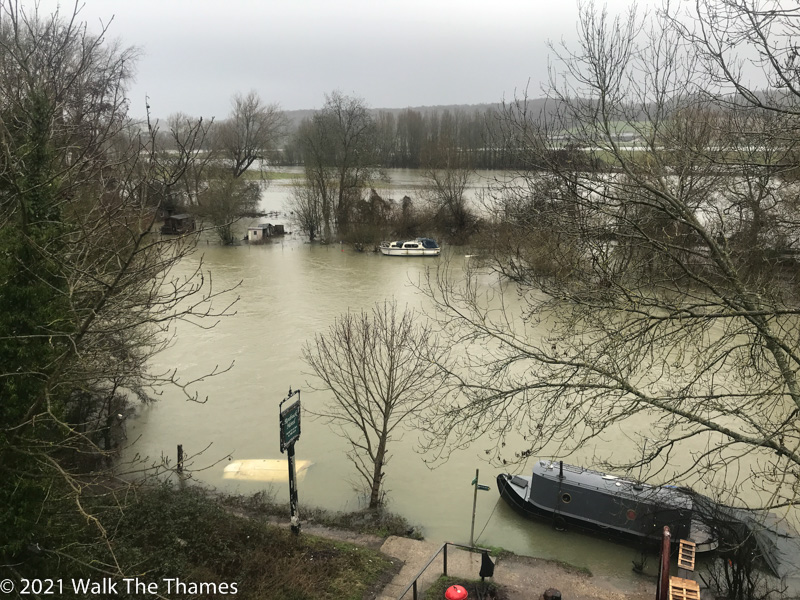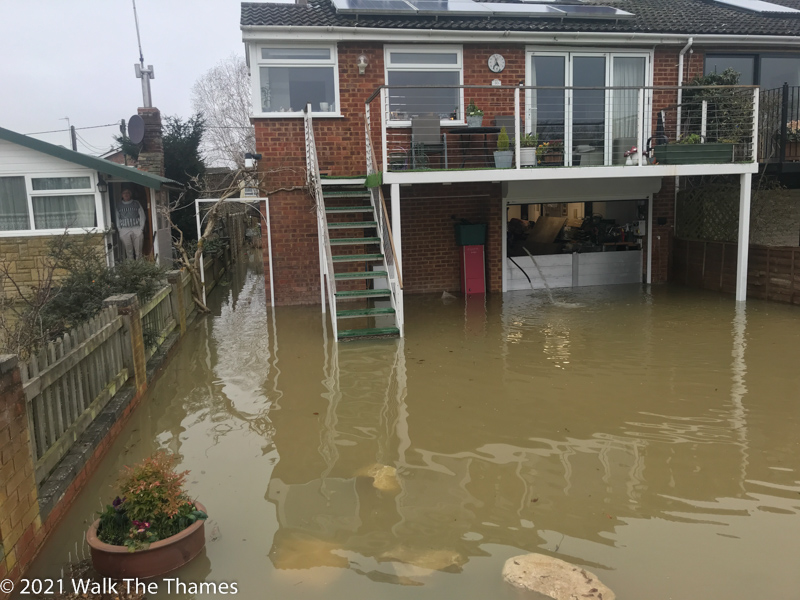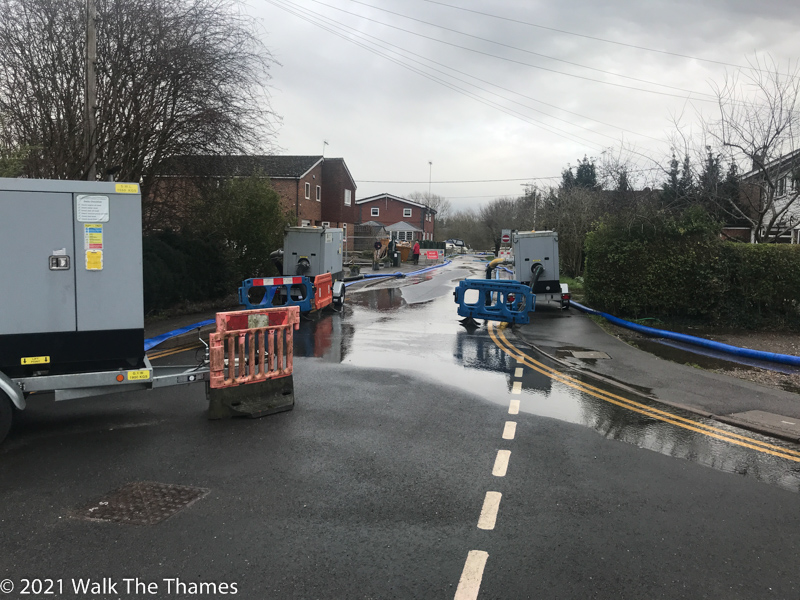It’s been a dramatic week on the Thames. Following some heavy rain in January, water levels rose throughout the week with some significant flooding. What with Coronavirus, one might be forgiven for thinking we were back in Biblical times.
On a happier note, the news that the first 10 million people have had their jab is a cause for great optimism. We said, in our newsletter two weeks ago, that we expected life to be sufficiently back to normal by the beginning of May such that we would be able to operate without restrictions. From what we have seen, we have no reason to change our plans. With the longer hours of daylight and the last month of winter upon us, there is much to look forward to.
We’ve written a special feature below on the flooding. Suffice it to say that much of the Thames Path is under water and inaccessible. But, then again, it’s inaccessible for most of us anyway because of lockdown restrictions!
There were glimpses of the redevelopment of the Riverside Stand of Premier League Fulham Football Club’s ground at Craven Cottage on the television this week. Craven Cottage sits on the left bank of the Thames. In fact, it’s the closest stadium to the Thames. (For more on football clubs along the Thames read our blog here). Ordinarily, the Thames Path threads the narrow gap between Riverside Stand and the river. In the meantime, Thames Path walkers must follow the perimeter of the ground.
Once completed “the riverside walkway will be transformed into a world class leisure destination; a pathway that will allow an uninterrupted walk along the banks of the River Thames between Hammersmith and Putney Bridges and a choice of amenities for visitors to enjoy throughout the year.” So says Fulham FC’s website. Good progress appears to be being made. Interestingly the pre-fabricated steel structures have been transported from Tilbury up the Thames on barges. It takes two days to reach Fulham as the low bridges on the river means they can only transport during low-tide. The structure is then lifted by cranes on the river.
The new stand is due to be open at the start of the next football season (August/September 2021). Whether Fulham will still be in the Premier League then is another matter.
This week we launched the second in our series of suggested itineraries. This is the “Moderate Series” aiming to complete the entire Thames Path (180 miles) in 14 days. Like the Easy Series, it has been broken down into 4 sections: Source – Oxford – Reading – Staines – Thames Barrier of 3-4 days each. The intervening points of Oxford, Reading and Staines are chosen because of their transport connections.
Packages can be purchased for each of these sections. The itineraries can also be combined so that 2, 3 or 4 sections can be walked at once. The itineraries, which have been written in a downstream direction, can also be reversed.
These suggested itineraries provide a range of options for completing the Thames Path in stages or in one go without building your own itinerary
And, on the subject of building your itinerary, as mentioned last week we are currently planning a new release of our route planner. We would love to hear from you if you have any suggestions for improvement.
The Thames Luminaries series continues this week:
Wednesday February 10 Boston Manor Park, great cedars and Jayne Mansfield – renovating the historic landscapes of Boston Manor Park for the 21st century
Thursday February 11 Orleans House: The changing landscape of Orleans House
Friday February 12 Ham House Garden is Ham House still a garden of contemporary ideas?
All talks are at 7pm. For more details and tickets see here.
This year marks the 125th anniversary of the printing of the Kelmscott Chaucer by William Morris. Morris established the Kelmscott Press, named after his Thames-side country house, to rekindle the skill of manual printing which existed prior to industrialisation. His reprinting of Chaucer’s Canterbury Tales was considered to be his finest printing work. It was completed in 1896, the year that he died.
The William Morris Society owns one of the original presses and a collection of his books. A number of activities are planned for the year and these are detailed on their website.

The harbingers of spring are in full force. Crocuses are now appearing as well as daffodils. The grass is starting to grow again – as are the weeds!
On a more sombre note, it’s sad to report another dog attack on a swan. Dorney was rescued by Swan Lifeline who are based in Eton Wick and provide shelter and treatment for sick and injured swans.
And a deer had to be rescued by the RSPCA. It had become caught in a fence between Shiplake and Henley.

They say it’s the worst flooding in seven years. From the source to London there is an uninterrupted line of flood warnings and alerts. Large swathes of the flood plain are covered with water. And yet it hasn’t felt like a particularly wet January, despite Storm Christoph giving us a glancing blow. But January actually saw 82 mm of rainfall being recorded at Benson (between Oxford and Reading). The average from 1981 to 2010 is just 54 mm. That’s a 50% increase. So perhaps we should not be surprised.

The River Thames normally occupies only a small part of a wider flood plain. When the water level gets high, it spills out into the plain, most of which is given over to pasture land. Part of the problem is that successive administrations have allowed homes to be built on the flood plain. Not only does that jeopardise the residents, some of whom have had to evacuate their homes, but it limits the ability of excess water to be soaked up in the ground. In Purley on Thames, where we are based, much of the flood plain has been developed. It is no co-incidence that this is where some of the acutest problems are seen.

There is only so much that the Environment Agency can do. They can control the levels of the water with the weirs. But, saving one area by holding back water may cause flooding upstream. They have also been active pumping excess water into the storm drains. And we have seen temporary barriers going up in Walton and Oxford. It can’t have helped that this all co-incided with strong incoming tidal flows necessitating the closure of the Thames Barrier. For a short while, the water had nowhere to go.

Thankfully the river levels have retreated a little over the last day. However, the water level below ground has continued to rise. And with more rain and snow forecasted for the next few days it could get a lot worse. Stay tuned.
Ready to book?
| Cookie | Duration | Description |
|---|---|---|
| cookielawinfo-checkbox-analytics | 11 months | This cookie is set by GDPR Cookie Consent plugin. The cookie is used to store the user consent for the cookies in the category "Analytics". |
| cookielawinfo-checkbox-functional | 11 months | The cookie is set by GDPR cookie consent to record the user consent for the cookies in the category "Functional". |
| cookielawinfo-checkbox-necessary | 11 months | This cookie is set by GDPR Cookie Consent plugin. The cookies is used to store the user consent for the cookies in the category "Necessary". |
| cookielawinfo-checkbox-others | 11 months | This cookie is set by GDPR Cookie Consent plugin. The cookie is used to store the user consent for the cookies in the category "Other. |
| cookielawinfo-checkbox-performance | 11 months | This cookie is set by GDPR Cookie Consent plugin. The cookie is used to store the user consent for the cookies in the category "Performance". |
| viewed_cookie_policy | 11 months | The cookie is set by the GDPR Cookie Consent plugin and is used to store whether or not user has consented to the use of cookies. It does not store any personal data. |